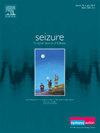婴儿癫痫痉挛综合征基因检测的诊断率及相关益处:系统回顾和荟萃分析
IF 2.7
3区 医学
Q2 CLINICAL NEUROLOGY
引用次数: 0
摘要
背景不同检测方法和研究对婴儿癫痫痉挛综合征(IESS)的诊断率存在明显差异。研究小组检索了2012年1月至2023年10月期间的PubMed、Embase和Cochrane对照试验中央登记册。数据由两名研究人员按照系统综述和荟萃分析指南的首选报告项目进行提取和综合。主要结果是各研究中单个 WES、MGPs 和 CMA 的汇总诊断率。根据纳入结节性硬化症复合体病例和纳入 MGPs 基因的数量进行亚组分析。结果我们的研究纳入了 30 项研究,涉及 2 738 名参与者。WES(13 项研究,n = 799)、MGPs(13 项研究,n = 1 117)和 CMA(13 项研究,n = 629)的 IESS 诊断率分别为 26 %(95 % CI = 21 %-31%)、20 %(95 % CI = 15 %-27%)和 14 %(95 % CI = 11 %-16%)。WES 和 MGPs 的诊断率相当(P = 0.34)。我们的结果表明,61.6% 的遗传性 IESS 患者可能会在临床管理方面受益于基因诊断。因此,对于疑似遗传性或病因不明的 IESS 病例,尤其是考虑到基因诊断可能带来的临床益处,这两种方法同样可被推荐作为一级检测方法。本文章由计算机程序翻译,如有差异,请以英文原文为准。
Diagnostic yields of genetic testing and related benefits in infantile epileptic spasms syndrome: A systematic review and meta-analysis
Background
Diagnostic yields for infantile epileptic spasms syndrome (IESS) are notably heterogeneous across different testing modalities and studies. To investigate the proportion of individuals with IESS harboring causative/pathogenic genetic variants identified using whole-exome sequencing (WES), multi-gene panels (MGPs), and chromosomal microarray (CMA), thereby providing evidence to inform guidelines for genetic testing strategies.
Methods
The study team searched PubMed, Embase, and Cochrane Central Register of Controlled Trials between January 2012- October2023. Data were extracted and synthesized by two investigators following the preferred reporting items for systematic reviews and meta-analyses guideline. The primary outcome was the pooled diagnostic rate of individual WES, MGPs, and CMA across studies. Subgroup analyses were performed based on the inclusion of cases with tuberous sclerosis complex and the number of genes included on MGPs.
Results
Our study included 30 studies, involving 2 738 participants. The diagnostic rates in IESS for WES (13 studies, n = 799), MGPs (13 studies, n = 1 117), and CMA (13 studies, n = 629) were 26 % (95 % CI = 21 %–31 %), 20 % (95 % CI = 15 %–27 %), and 14 % (95 % CI = 11 %–16 %), respectively. WES and MGPs showed comparable diagnostic yields (P = 0.34). Our results indicated that 61.6 % of individuals with genetic IESS may potentially benefit from genetic diagnosis in terms of clinical management.
Conclusions
Our results showed that WES and MGPs exhibited comparable genetic diagnostic yields. Therefore, either method could be equally recommended as a first-tier testing approach for IESS cases with suspected genetic or unknown etiologies, especially considering the potential clinical benefits derived from genetic diagnosis.
求助全文
通过发布文献求助,成功后即可免费获取论文全文。
去求助
来源期刊

Seizure-European Journal of Epilepsy
医学-临床神经学
CiteScore
5.60
自引率
6.70%
发文量
231
审稿时长
34 days
期刊介绍:
Seizure - European Journal of Epilepsy is an international journal owned by Epilepsy Action (the largest member led epilepsy organisation in the UK). It provides a forum for papers on all topics related to epilepsy and seizure disorders.
 求助内容:
求助内容: 应助结果提醒方式:
应助结果提醒方式:


